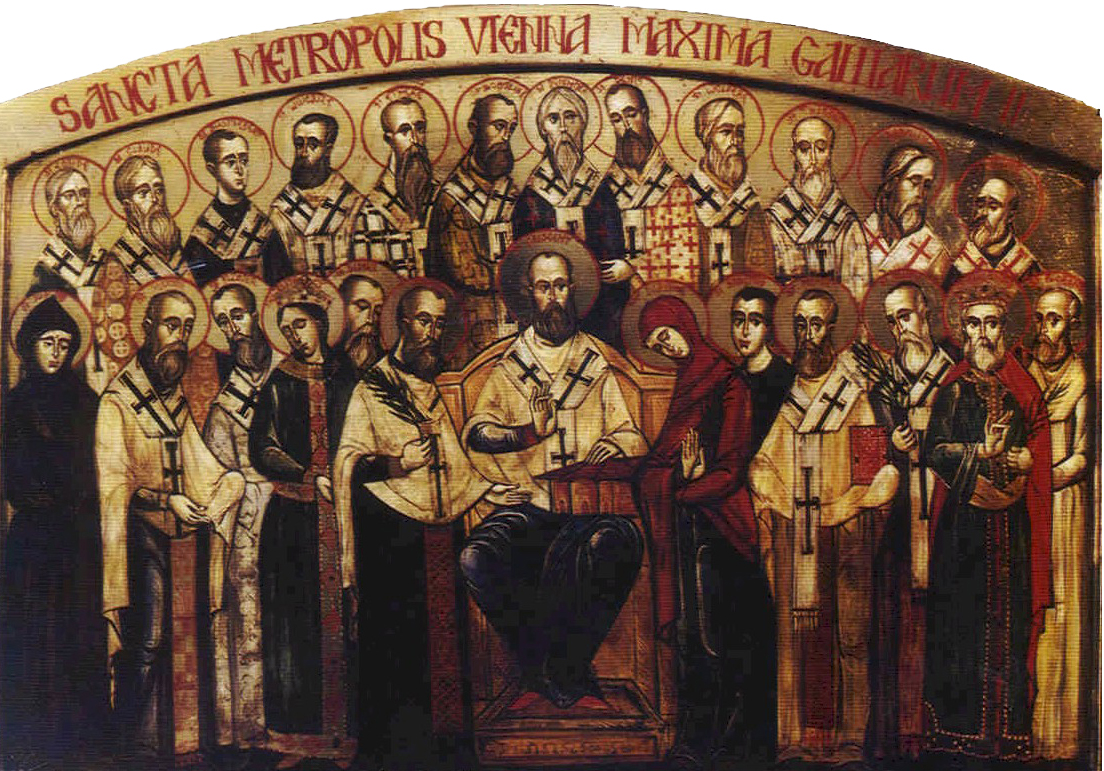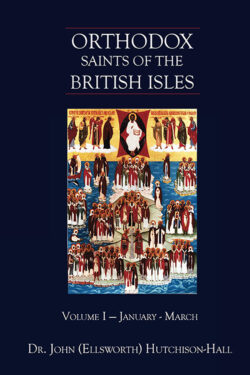
Orthodox Saints of the Pre-Schism
See of Rome
27th January (NS) — 14th January (OS) 2025
DATIUS (DACIUS) , consecrated the twenty-seventh Bishop of Milan circa 530, St. Datius was forced to flee to Constantinople after Milan was overrun by Arian Ostrogoths. He spent the rest of his life in exile in Constantinople defending orthodoxy from the heresies of the day, especially Arianism. St. Datius reposed in 552.
EUPHRASIUS, (Date Unknown), a bishop of an unknown see, martyred by Arian Vandals in North Africa. No further details of his life are extant.
FELIX of NOLA, the elder son of Hermias, a Syrian soldier who had retired to Nola near Naples. Upon the death of his father, St. Felix sold his possessions, giving the proceeds to the poor and sought ordination to the priesthood. Having been priested by St. Maximus of Nola (15th January), St. Felix dedicated himself to service of his bishop. During the Decian Persecution (250–251) St. Felix was arrested and tortured while St. Maximus fled to the mountains, but according to legend, an angel freed St. Felix so he could care for the ill St. Maximus. St. Felix successfully hid himself and his bishop until the end of the persecution. Upon the repose of St. Maximus, St. Felix was chosen his successor, however, he demurred, recommending a priest who had been ordained seven days before him as having more experience. St. Felix retired to farm, providing food for the poor and reposed circa 255. Because of the torture and imprisonment he experienced during the Decian Persecution St. Felix is often listed in martyrologies and calendars as a martyr.
FELIX of ROME, (Date Unknown), a priest in Rome, of whom no further information is extant.
POTITUS, (Second Century), according to the Roman Martyrology, St. Potitus was a martyr who after great tortures was beheaded in Sardinia during the reign of Emperor Antoninus (r. 138–161).
Get your copy of Orthodox Saints of the British Isles today.
Available at Amazon or your favourite e-bookstore.
AVITUS, (Date Unknown), a martyr in Africa, nothing else certain is known of him. However, there are sources who advance the theory he may be the same St. Avitus who is venerated as the Apostle to, and first Bishop of, the Canary Islands.
CANDIDA, an anchoress near the monastery of St. Stephen of Bañoles in Catalonia, which had been founded by her son St. Emerius (vide infra). St. Candida reposed circa 798.
DATIUS, REATRUS (RESTIUS), and 28 COMPANIONS; DATIUS (DATIVUS), JULIAN, VINCENT, and 27 COMPANIONS; and LUCIUS of AFRICA, and 40 COMPANIONS, (Fifth or Sixth Century), three distinct groups of Christians in Africa Proconsularis who were martyred by the Arian Vandals for the faith. Aside from these few names, no information on their lives is extent.
DEVOTA, the patron-saint of both Corsica and Monaco, St. Devota was a virgin-martyr in Corsica who was subjected to great torture and finally martyred either on the rack, or by stoning in the Diocletianic Persecution circa 303. After her repose, the Prefect ordered her body be burnt to prevent veneration. However, before the Romans could carry out the Prefect's orders, Christians rescued her body and took it to Africa where it received a Christian burial. Later relics were translated to Monaco and enshrined in the Sainte-Dévote Chapel.
EMERIUS, (Eighth Century), founding Abbot of the Monastery of St. Stephen of Bañoles in Catalonia. His mother, St. Candida (vide supra), lived as an anchoress near the monastery.
JULIAN of LE MANS, (Date Uncertain), according to the Roman Martyrology, St. Julian was consecrated Bishop by the Apostle Peter (29th June), who then sent him to evangelise in Gaul. However, as most martyrologies place him in the third century, he could not have been consecrated by the Apostle Peter. Regardless, he did serve as the first Bishop of Le Mans, and evangelised the area, bringing many people to Christ.
JULIAN of SORA, a native of Dalmatia who was arrested, tortured, and beheaded in Sora in Campania in a persecution of Christians during the reign of Antoninus Pius (r. 138–161) circa 150.
LUPUS of CHÂLONS, tenth Bishop of Châlons-sur-Saône, and friend of St. Gregory the Dialogist (3rd September). St. Lupus was renowned for his charitable acts. He reposed circa 610.
MAURUS (MARIUS, MAY), the founding Abbot of the Abbey of Val Benoit (Bodon Abbey), near Sisteron, in present-day France. St. Maurus reposed in 555.
NATALIS, (sixth century), St. Natalis was a spiritual child of St. Columba of Iona (9th June), and the founder of monasticism in Ulster. He served as Abbot at St. Naul’s, Inver (Co. Donegal), Kinawley (Cill Naile, Co. Fermanagh), Inver Naile (at Raphoe, Co. Donegal) and at Devenish (Daimhinis) Island where he was the successor of St. Laisrén of Leighlin (18th April). His holy well at Kinawley Church is still venerated.
THEODORIC II of ORLEANS, a monk at the Abbey of Saint-Pierre-le-Vif in Sens. St. Theodoric served as a Royal Councillor, and later was consecrated Bishop of Orleans. He reposed in 1022.
VITALIAN, seventy-sixth Pope of Rome (657–672). Much of his pontificate was occupied with unending conflict with those prelates who supported Monothelitism. St. Vitalian also consecrated St. Theodore of Tarsus (19th September) as Archbishop of Canterbury and sent them to England. He reposed in 672, and is buried at St. Peter's Basilica, Rome.
Prior to the Schism the Patriarchate of Rome was Orthodox, and fully in communion with the Orthodox Church. As Saint John of Shanghai and San Francisco +1966 said “The West was Orthodox for a thousand years, and her venerable Liturgy is far older than any of her heresies”.
Details of British Saints excerpted from Orthodox Saints of the British Isles.
Details of continental saints from these sources.
In many cases there are several spelling versions of the names of saints from the British Isles. I use the Oxford Dictionary of National Biography version as the primary version with the more prevalent version in parenthesis e.g. Ceadda (Chad) of Lichfield.

